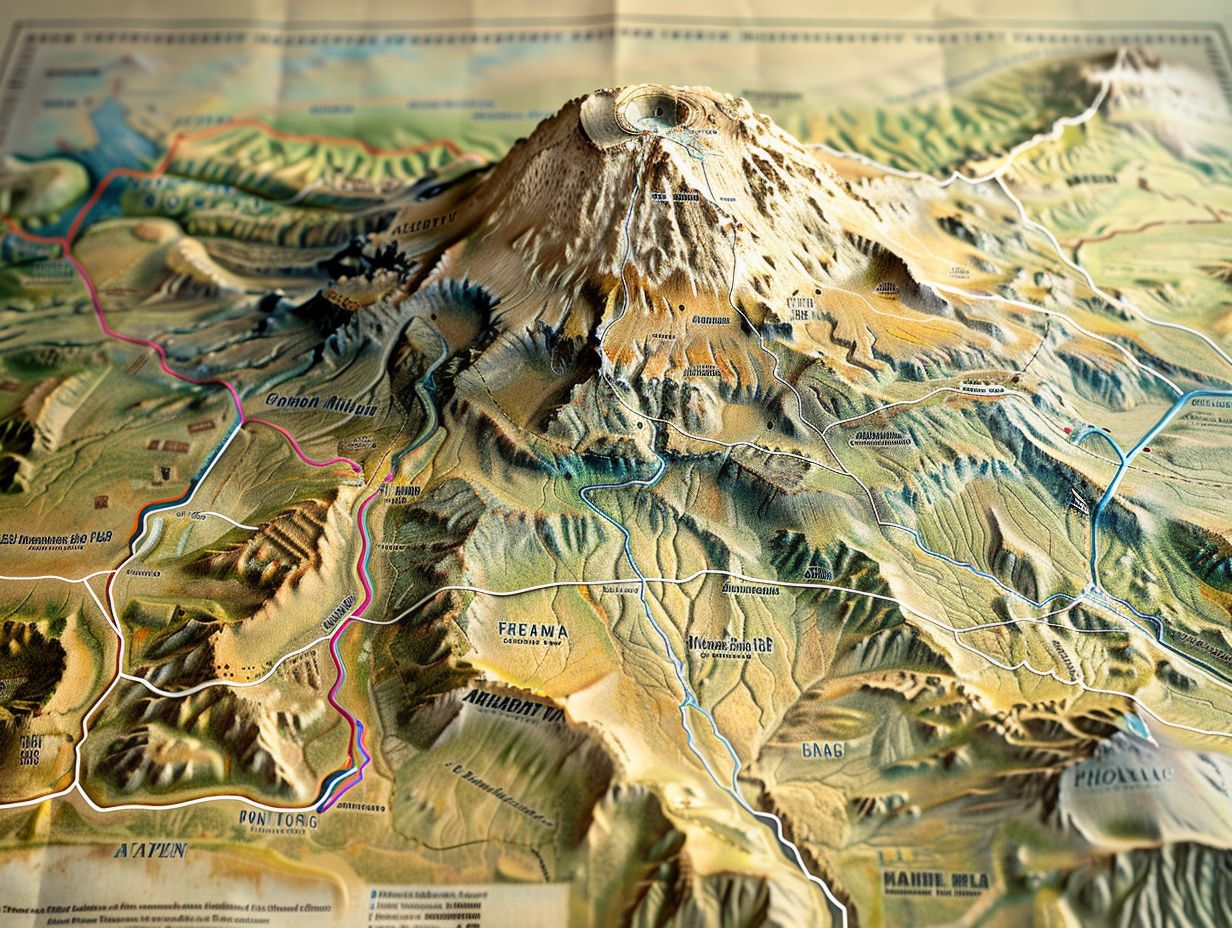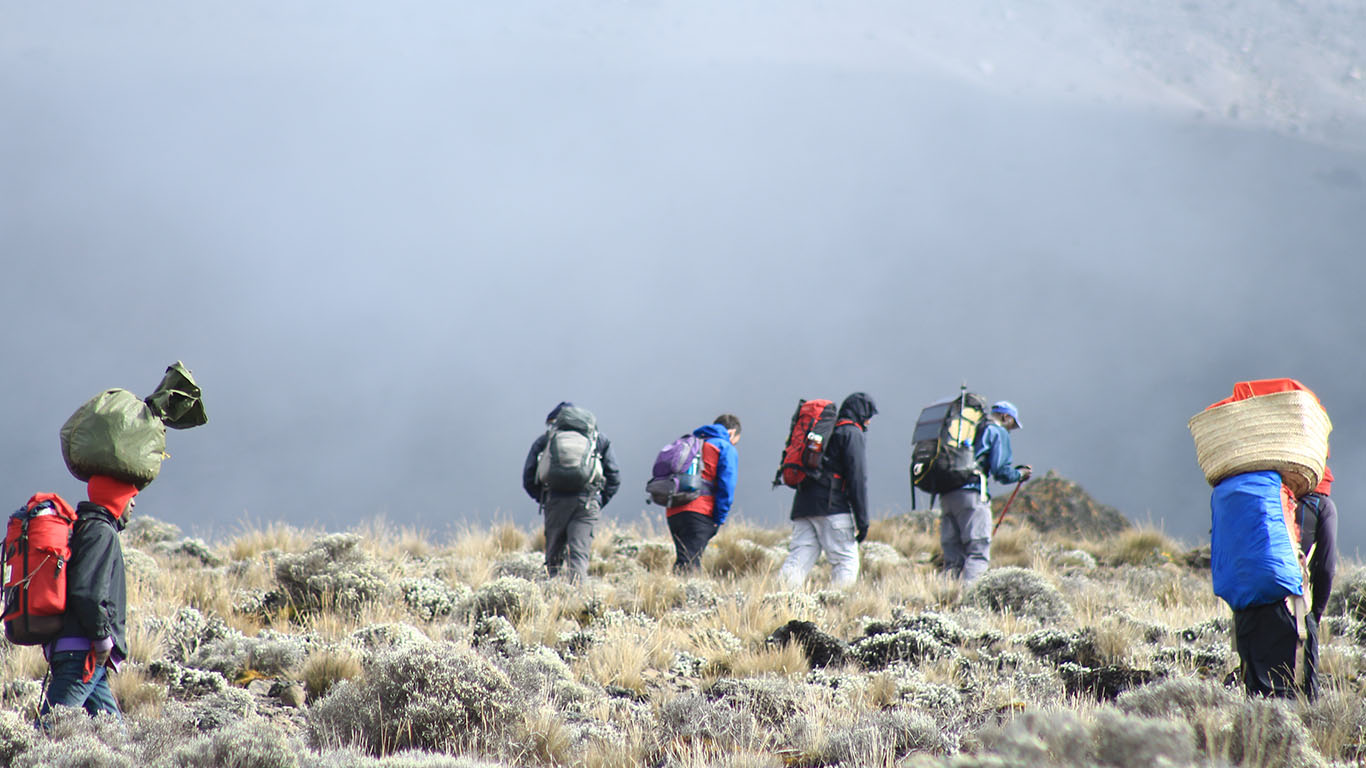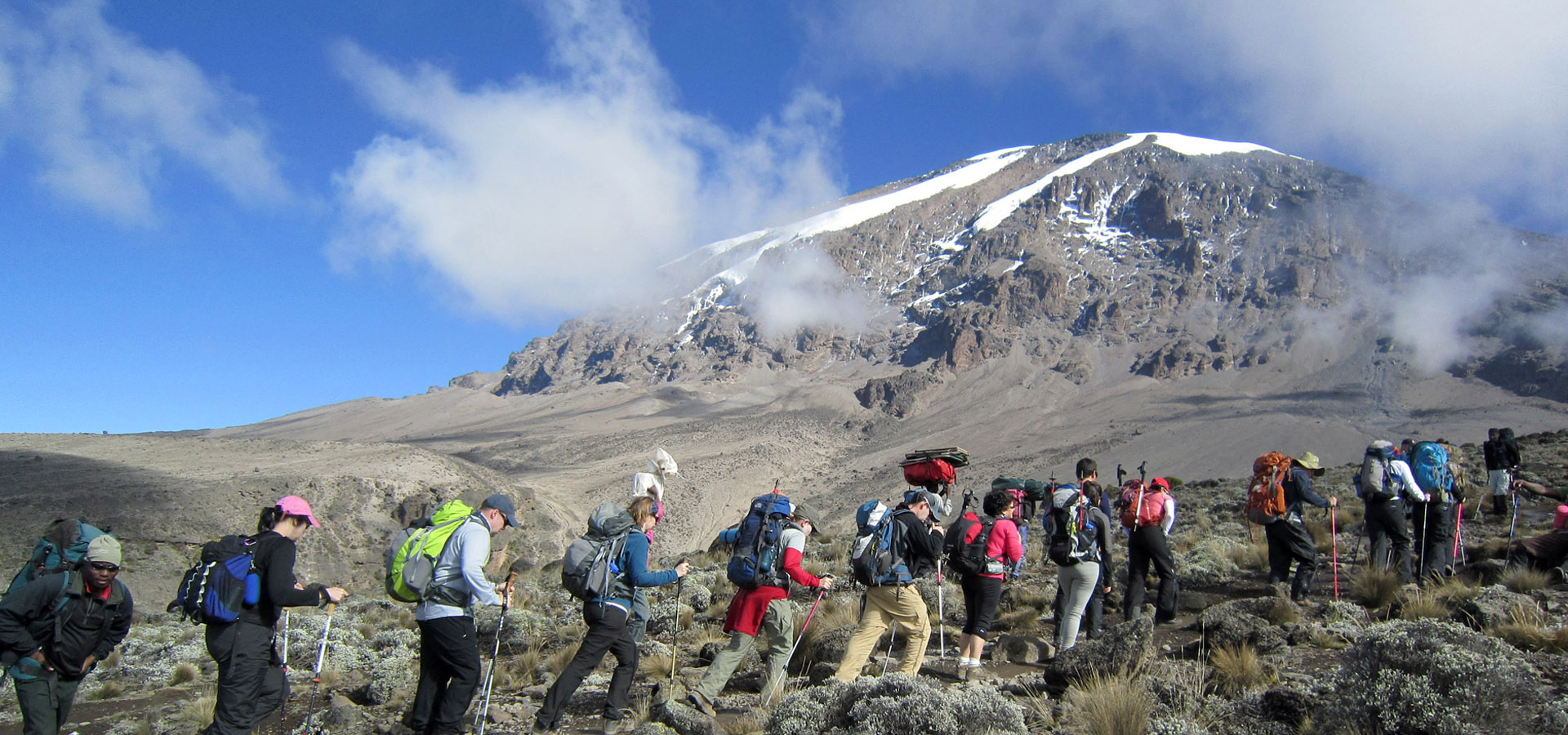Which Kilimanjaro route to choose?
Things to consider when choosing a route to climb Kilimanjaro
Kilimanjaro National Park Authority has seven official routes for Mount Kilimanjaro. This guide outlines each one in detail to help climbers choose which best fits their interests and fitness level. Every route differs in its specific draw, from scenic views to difficulty level, and most importantly – acclimatization profiles.
Acclimatization profile
Acclimatization to high altitude is different on each route due to the overnight camp locations, steepness of the trail, and daily trekking distance. The summit is the final test for acclimatization: climbs that take seven days or more have a distinctively higher success rate in reaching the summit than treks that cover six days or less. Acclimatization has a stronger influence on reaching Uhuru Peak than any other factor, including age or even fitness level. For example, a group of older trekkers on a seven-day Lemosho program (one of the best acclimatization profiles) has a more likely chance of summiting successfully than a team of young athletes on a five-day variation on the Marangu Route.
The best acclimatization transition is available on the 7-day variations of Lemosho, Machame, and Rongai routes. If you are strapped for time, 6-day Lemosho and Marangu variations are good picks.
Unless you are an experienced climber with prior acclimatization, choosing a 6-day variation of the Machame route is a bad idea. While Machame is otherwise a great trail, its shorter itinerary is very taxing and has a remarkably lower success rate.
Experience level
Due to the various acclimatization profiles of every route on Kilimanjaro, Tanzania Hiking recommends Lemosho (7 and 8-day itineraries), or Machame (7-day) for beginners. Northern Circuit is also a fantastic trek with good acclimatization; trekkers interested in more information about this route please contact the Tanzania Hiking.com office.
Hikers with some experience may consider other routes on Kilimanjaro, such as Marangu and Rongai. However, we strongly suggest preparing with prior acclimatization for the highest chances of success. Climbers can spend a significant time at higher altitudes in their home country or summit Tanzania’s second-highest peak, Mount Meru, for prior acclimatization before attempting Kilimanjaro.
Scenic views
After acclimatization profile and experience level, the next biggest factor to consider for a Kilimanjaro route is often scenery. While it may seem trivial at first, this aspect has a huge influence on the full climbing experience: the overall trek, photographs, and day-to-day hikes on the mountain are all influenced by scenery. The first days of a Lemosho trek are spent climbing the famous Shira Plateau with its splendid panoramas. Machame route, on the other hand, starts in a dense rainforest with unique flora and fauna and ascends to an alpine climate, with trekkers climbing the Barranco Wall. Each route offers a unique viewpoint of the beauty of Africa to climbers.
Apart from the epic summit, landmark features on Mount Kilimanjaro are:
Barranco Wall is an iconic destination on Kilimanjaro. Though at first sight it looks formidable and unconquerable, getting closer will allay all fears – there is a well-trodden path leading up to the summit.
Hikers scale Barranco Wall when doing a Kilimanjaro climb through Lemosho, Machame, or Umbwe Route.
Shira Plateau treats hikers to the epic panoramic views of the ancient (now-collapsed) caldera of one of the Kilimanjaro volcanoes. The area is rich in flora, with many endemic flowers and plants found only on Kilimanjaro. Shira Plateau borders Amboseli National Park (in Kenya), and wild animals used to roam freely in between the two ecosystems, and an armed ranger was always assigned to accompany hikers going through Shira. However, today one is unlikely to spot any wild animals on the Shira Plateau, and there is no company of an armed ranger any longer. Nonetheless, the views there are breathtaking.
Shira Plateau is also the place to see
dendrocoelid Kilimanjaro
A unique plant to be found nowhere else, but here
You will enjoy the hike through Shira Plateau when choosing the Lemosho route for your adventure.
Tropical rainforest
Mount Kilimanjaro has rich flora, fauna and incredibly fresh air along the trail that passes through the tropical rainforest. This is exactly the place to see some of the Animals which live on Mount Kilimanjaro, especially blue monkeys and white colobuses.
You will go through a tropical rainforest when hiking Kilimanjaro through Marangu and Machame routes.
Coniferous rainforest grows on the Northern side of Kilimanjaro and the only place to go through it is the Rongai route.
Crowdedness
Some routes are more popular than others. It is not for the reason that these routes are better – it is simply because their trailheads are closer to the tourist hub of Moshi, and many tour operators prefer starting their treks from there. Hikers who love to be in the middle of a motley crowd will certainly enjoy them, but those who want a quieter experience are advised to opt for a more remote trek.
The busiest routes on Kilimanjaro are:
Marangu route – the busiest of all, it receives about a half of all Kilimanjaro trekkers.
Machame route – the second most popular, it is chosen by about a third of all tourists.
NOTE: this applies to the busy season only (see below). Together with others, these routes are nearly free from the trekking groups during the rainy season.
Season
The weather in Kilimanjaro and in Tanzania at large is an important thing to consider. In contrast to Europe or America, this country does not have “winter”, “spring”, “fall” and “summer” in our traditional understanding. Instead, there are two “dry” and two “rainy” seasons. Their timespan is roughly the following:
The hot dry season is from late December till early March. For many hikers this is the best time – it is very warm, and the chances of rain are pretty slim. Coupled with the fact that it coincides with the Christmas holidays, this time becomes especially attractive for the hike. It is also the time when Marangu and Machame routes are notably crowded.
In mid-March the hot rainy season begins and it lasts until the beginning of June. Kilimanjaro trails on certain routes become blurred, and the road to Lemosho is often inaccessible. However, Rongai, which is on the northern side, is known to get less moisture, and Marangu, which offers hut accommodation as opposed to tents, are very good alternatives for this period.
The dry season returns in mid-June and lasts till early October. This dry season is remarkably colder than late December – early March, but the difference is not so noticeable on the hike. This is when the routes become busy again.
In the middle of October the rains begin again and last until the end of November, completing the annual cycle.
Overall, late December – early March and mid-June – early October are the times when Machame and Marangu routes are quite busy. Lemosho, Rongai, Umbwe and Northern Circuit may have some groups on the route, but otherwise offer some privacy while trekking Kilimanjaro.
NOTE: depending on the itinerary, the Lemosho route converges with Machame in the Barranco Camp on the 3rd or 4th day of the trip, and from there the routes share the same path to the summit. Therefore, one should expect the route to become busier than at the very beginning of the adventure.
Northern Circuit uses Kibo summit camp for the final part of the journey, and the hikers will share the path with those climbing Kilimanjaro via the Marangu route.
Accommodation style
On all Kilimanjaro routes, except for Marangu, hikers sleep in mountain tents, carried by a team of porters and pitched by camp masters. On Marangu, however, hikers sleep in special wooden huts with dormitory-style bunk beds.
Cons:
1) Because the huts are collective, one has to share them with other travelers, often from other (non- Ways African Safaris) trekking groups. Some people may stay up later, chatting or snore at night, disturbing your sleep as a result.
Depending on the camp, each hut on Marangu sleeps from eight (at Mandara and Hormbo) to sixteen hikers (at Kibo)
2) Here is no way comfort extras can be added at the huts. While our team can deploy soft camp cots inside our spacious tents, on the Marangu route the hikers have no other option but to sleep on the wooden bunks.
Pros:
1) Huts provide somewhat better experience during the rainy season. Our tents are well-insulated, safeguarding the climbers from precipitation, but there is nothing we can do about the puddles, which may form around the tent at night. On the other hand, the Marangu huts are constructed upon strong concrete bars.
2) Some people believe huts to be warmer, but we find this questionable. Having measured the temperature inside a hut and inside one of our tents, we concluded that the tents are, in fact, warmer.
Please note that unlike the huts on other popular mountain destinations, e.g. Mount Elbrus, the Marangu huts are not heated, and good sleeping bags are mandatory.
3) Power sockets are available in the huts. Electricity is, however, generated by the solar batteries and when it is cloudy availability may be limited. Most hikers prefer taking power banks, anyway.
Comfort extras
Here at Ways African Safaris we try to make our trips not merely safe, but also comfortable. Our comfort additions include:
Use of special, well-insulated tents manufactured by the North Face (VE-25 type, normally used in the Everest expeditions). By default these tents sleep three climbers, but in our expeditions we provide one tent to two people. Single accommodation is also available.
We also have a special, custom-ordered variation of Kilimanjaro tents which are spacious enough to walk in and deploy a camp-cot inside. These tents are excellent for those wanting extra comfort on Kilimanjaro.

